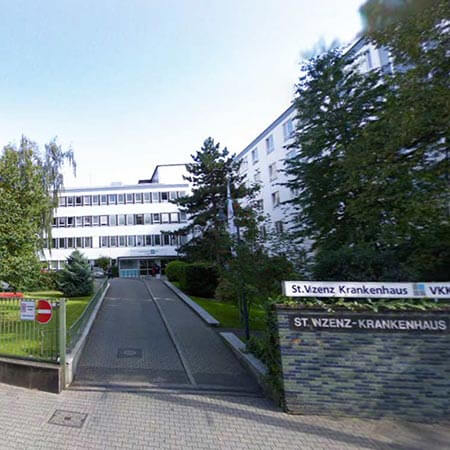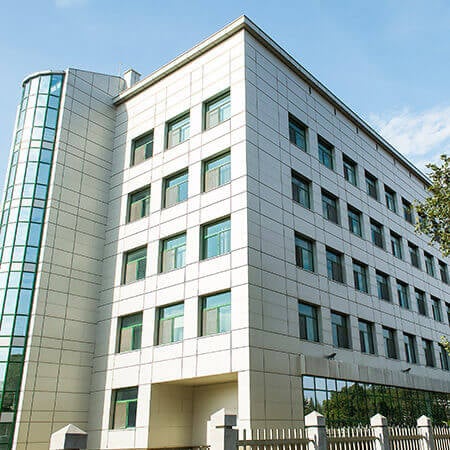Ankle instability develops as a result of ligament sprains or tears. This injury accounts for up to 40% of all injuries in sports medicine, including 50% of all injuries in basketball and up to 30% in football. You can undergo your ankle instability treatment in Germany in order to return to your training, physical work, and your usual lifestyle without any restrictions as soon as possible. The doctors in this country perform minimally invasive operations through short incisions. They perform anatomical reconstruction of the ankle ligaments, which provides excellent functional outcomes.
Content
- What is ankle instability?
- Conservative treatment
- Surgical treatment
Ankle instability is treated with surgical techniques. Doctors perform open and minimally invasive surgical interventions to suture, strengthen, or reconstruct the torn ligaments.
You can undergo your treatment in one of the following hospitals: University Hospital Frankfurt am Main, Vitos Orthopedic Clinic Kassel, or University Hospital Ulm.
Please leave your request on the Booking Health website, and we will take care of the organization of your trip. Our company's specialists will recommend a specialized clinic and a surgeon, as well as tell you about the latest treatment methods and rehabilitation options. They will help you to apply for your visa, provide your medical insurance, and take care of your transfer and accommodation. A personal medical coordinator will always be in touch with you, and you will visit the clinic accompanied by an interpreter.
What is ankle instability?
The ankle joint has a complex structure. It consists of three joints: the talocrural, subtalar, and tibiofibular syndesmosis. They all function together, and their interaction provides full mobility and stability to the ankle. The main contribution to the stability is made by the articular surfaces, muscles, and ligaments: anterior, posterior talofibular, and calcaneofibular ones.
Ankle instability can be:
- functional – the patient feels it but does not have any anatomical prerequisites;
- mechanical – this one occurs as a result of anatomical abnormalities.
Mechanical ankle instability is associated with a ligament tear or weakening. This is the result of a one-time injury or a long-term chronic microtrauma. Even with an incomplete tear, the ligaments can grow together in an elongated state, which leads to a violation of ankle stability.
Here are the grades of mechanical ankle instability:
- grade 1 – ligament sprain;
- grade 2 – partial ligament tear;
- grade 3 – complete ligament tear.
Functional instability is associated with impaired proprioceptive sensitivity. In fact, this is only a feeling of instability, as a person receives insufficient feedback from his ankle joint during his movements. It may be associated with Ehlers-Danlos, Marfan, or Turner syndromes.
Here are the grades of functional ankle instability:
- grade 1 – a person feels some instability, but they can walk normally;
- grade 2 – the patient is lame;
- grade 3 – the patient is unable to walk.
Conservative treatment
Conservative treatment for ankle instability includes the following options:
- adequate medical care after the injury sustained – rest, ice, the elevated position of the limb, and compression;
- early physical rehabilitation – increasing the range of motion, physical activity, taking into account symptoms, and physiotherapy.
Even with the proper functional rehabilitation, 25% of patients develop chronic instability after an ankle sprain.
Surgical treatment
More than 70 different options for the surgical correction of ankle instability have been described in the literature. Doctors use anatomical and non-anatomical correction. Non-anatomical one has rarely been used in recent years, as its results are worse.
The Brostrom operation is most commonly used for the anatomical reconstruction of the ankle ligaments. The Evans and Christman-Snook operations are non-anatomical reconstruction options.
When performing surgery, doctors suture the torn ligaments together, can strengthen them with additional tissues (biological or synthetic), and in severe cases, actually create a new ligament to replace the torn one. Autoplasty is the most common procedure: the ligament is restored with the patient's own tissues, usually the tendons of the calf muscles. With this variant of plastic surgery, people can endure any load after their rehabilitation since the risk of repeated tears will be minimal.
Depending on the surgical approach, doctors can use ankle arthroscopy or open surgery. Whenever possible, German orthopedists prefer to perform arthroscopic operations. Through short incisions a few millimeters long, they insert long thin instruments and a mini video camera into the joint cavity, under the guidance of which they perform the necessary manipulations. After such interventions, a person tolerates the postoperative period more easily, recovers faster, and suffers less from complications. Due to the smaller incisions in the ankle area, the intervention does not leave any large scars.
To undergo your diagnostics and treatment of chronic ankle instability, you can seek medical attention from one of the German Centers for Orthopedics and Sports Medicine. You are kindly welcome to use the Booking Health service to check the cost of treatment in different hospitals and make an appointment for your treatment at the best price. The employees of the Booking Health company will help you to choose the most suitable clinics in Germany and organize your trip.
Authors:
The article was edited by medical experts, board-certified doctors Dr. Nadezhda Ivanisova and Dr. Sergey Pashchenko. For the treatment of the conditions referred to in the article, you must consult a doctor; the information in the article is not intended for self-medication!
Sources:
Journal of Orthopaedic Trauma
Articles for Orthopaedic Practice - Orthogate
Medical News Today















